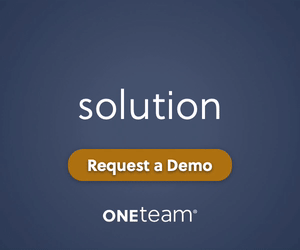“Know your audience” is common sense when it comes to proposal writing, it’s advice that would elicit an eye roll from most, if not all, proposal writers. Redefining what that means has been key in improving my proposals and their value propositions.
I began challenging myself with questions like:
- “What are they getting out of this proposal?”
- “Are they the decision-maker? Who is? What do they care about in this proposal?”
- “How much time do they really have to read this proposal?”
- “How do I catch their attention, so they don’t just flip to the pricing page?”
Questions of this sort drove me to a realization that the proposal is a crucial centerpiece to continue a larger, more holistic win strategy. It wasn’t just a “checkbox” to complete. I stopped heralding the company I submit for, stopped worrying about writing eloquent beautiful prose (sometimes), and stopped adding excessively technical content unless it was an absolute must because the client directly requested it. I found that once I started distilling complex information into bite-sized morsels that could be explained easily to anyone in and out of the industry I began receiving much more positive feedback from clients, teammates, and executives.
One aspect became the focus of my writing: “What will they get and how will it benefit them?” Explaining complex solutions, listing company qualifications, naming technology suites, complex logistics plans, etc. was no longer at the forefront of my proposals. The client was the hero. I presented them as the beneficiary and how they’ll be able to deliver success to their stakeholders, clients, and organization through our working relationship. It’s a game of professional telephone – deliver the right information to the recipient so they could use it, explain it, and highlight the benefits to their decision-makers and how it would benefit them.
Let’s say you have a massive ecosystem of technology solutions that will cover every nook and cranny of the client’s industry? To them it probably sounds overwhelming, has a steep learning curve, and they’re lost amongst the names of your solutions because they’ve never heard of them. Their heads are spinning. Instead, focus on their pain points and how your solutions address them, how it will make their lives easier, how it will solve not only the issues they have now but, in the future because it is a flexible solution with consistent investment in it. You’re offering a partnership, where their success is your success.
Knowing your audience goes beyond the contact you’re submitting to, their title, and the questions you’re responding to packaged in a beautiful print document or immersive microsite. It’s knowing how to cultivate that partnership. Asking the right questions and doing the research to figure out their pain points, who are their stakeholders, what benefits them directly, and how you can help them use your proposal as their proposal. Ultimately, your proposal is a toolbox with directions you’re handing to your recipient to use to drive maximum value.
Now, how do you apply this? Here is an example from my time at a construction company on how I addressed pain points for a healthcare client doing an expansion of an existing hospital:
- Safety was priority number one: I focused on how our team would ensure patient, staff, and visitor safety with a phased approach to not impede on the active hospital conditions and keep everyone away from the active job site. We highlighted that we’d collaborate with them to ensure that there is a stringent and detailed safety plan to always give them peace of mind.
- Clientele understanding was key: They were expanding, which means they were either looking to add clientele or respond to their clientele’s growth. Either way, they would be in the public eye, which means our community and outreach team could work with them to create clear and effective messaging on the effects of construction. We helped them give their clientele a proper timeline, the impact on the hospital’s functions, and how it would affect and benefit the community. I like calling this approach “feeling the heartbeat of the community.”
- Beauty is in the eye of the beholder: There’s rarely much beauty to look at in an active construction site surrounded by a big fence. I approached this by proposing to connect our project team with the client’s marketing team to set them up with measurements and areas that could be valuable space for fence-mounted banners to market the new expansion and build community interest. A relatively simple task that turned out to be a great value add for the client.
While this is an industry-specific example, I have seen results using this mindset in the other industries I’ve worked in, and these techniques can also be applied to your industry. A client-focused approach goes a long way to show them that you understand their project, not only on a technical RFP level, but through a holistic, heartfelt, and easily understandable lens. You’re addressing the things that truly matter to them and more.
Now, let’s get to know your client and build those partnerships!




Join the Conversation